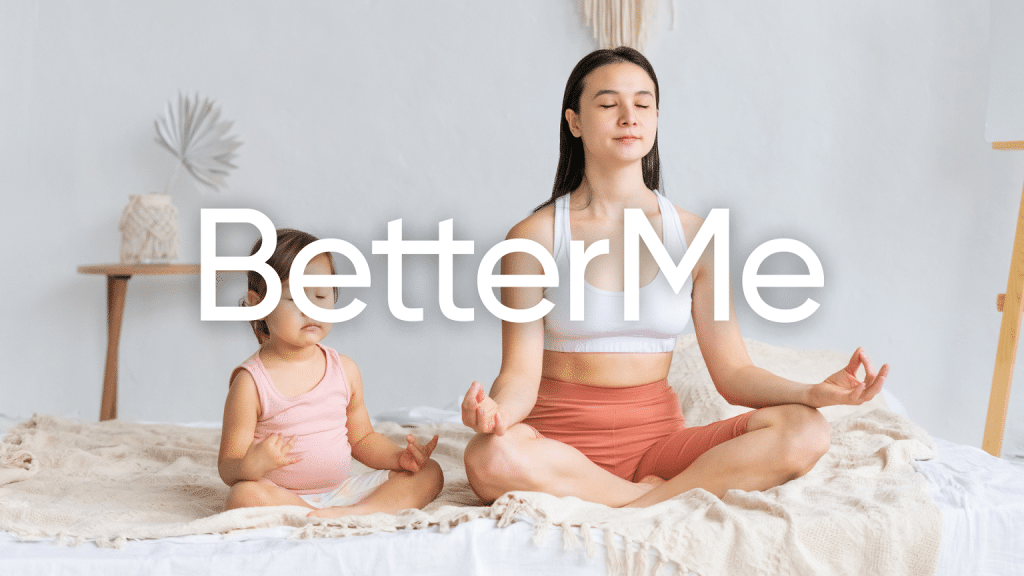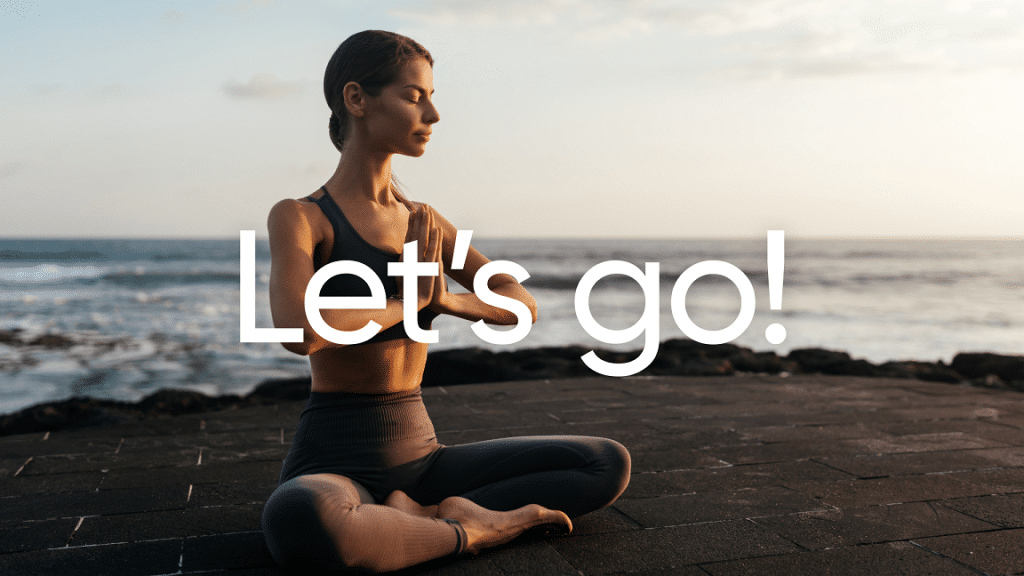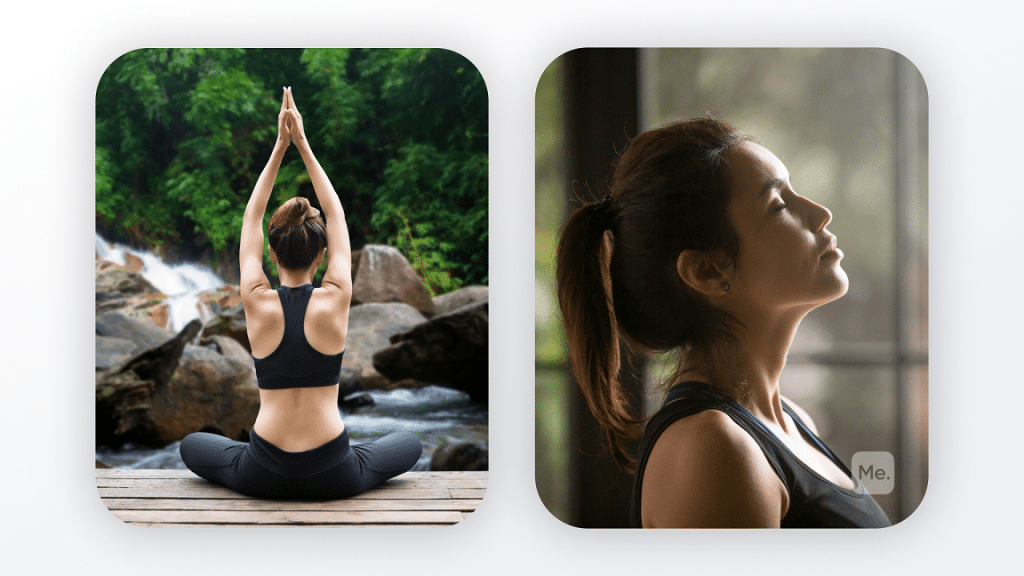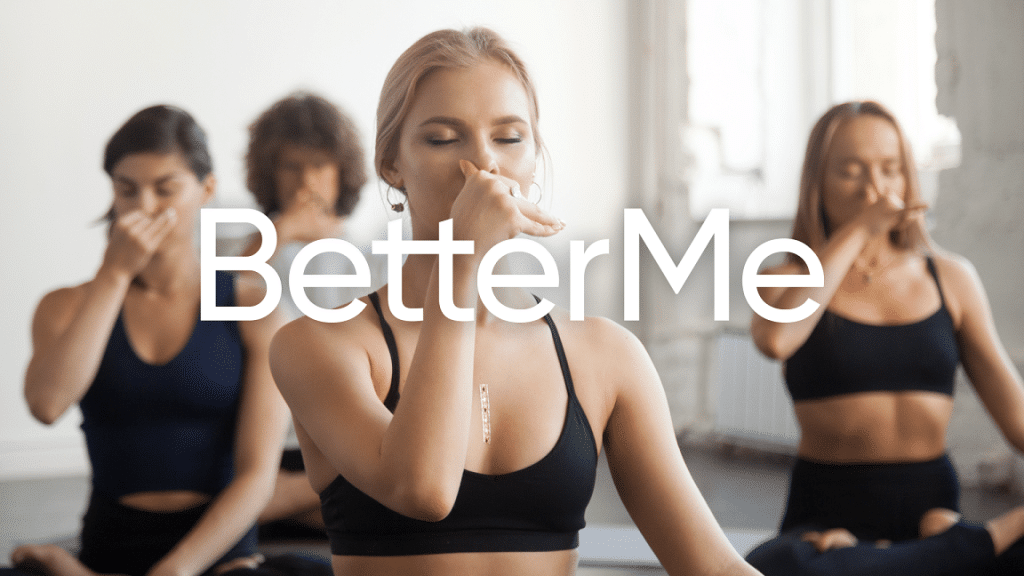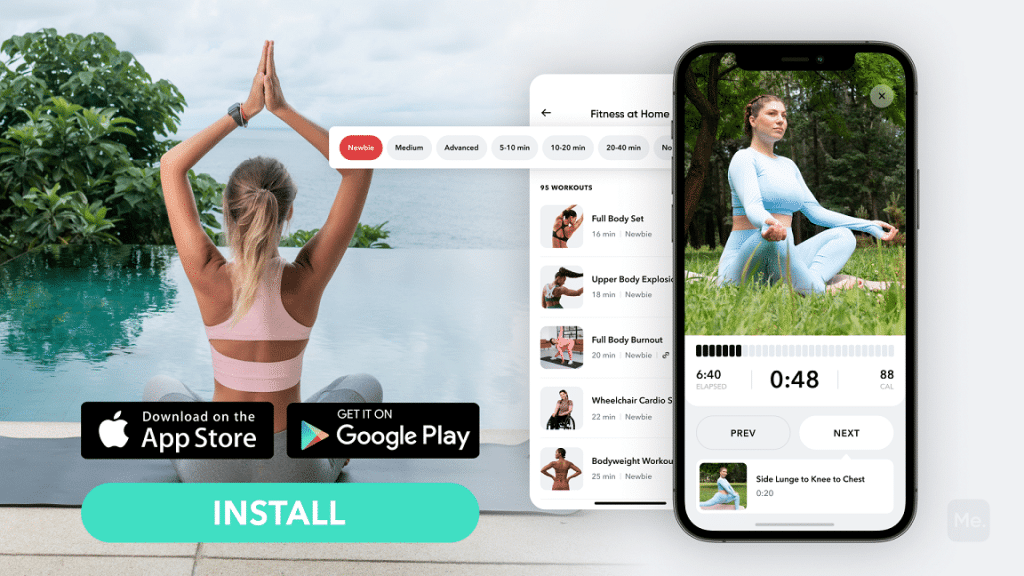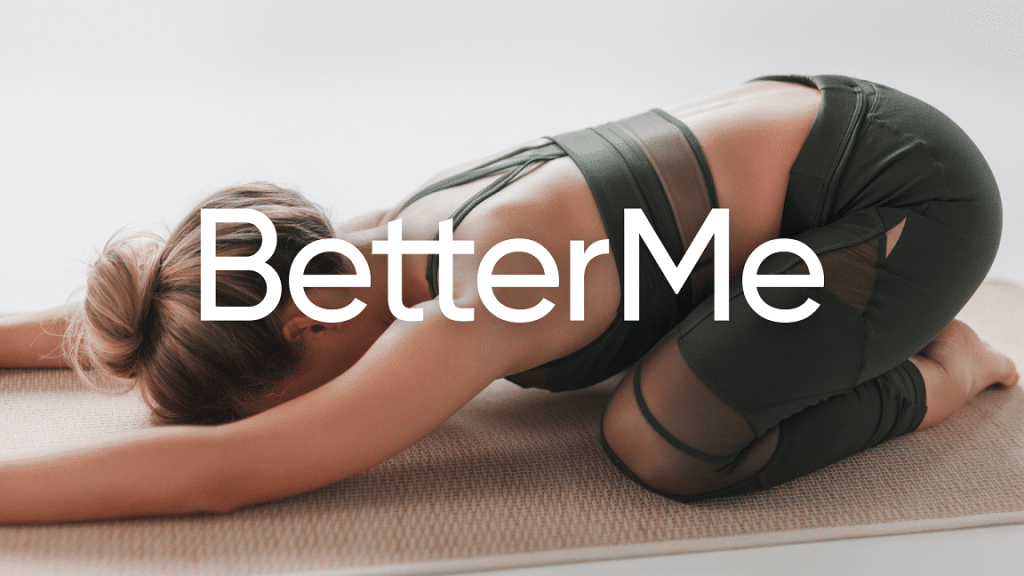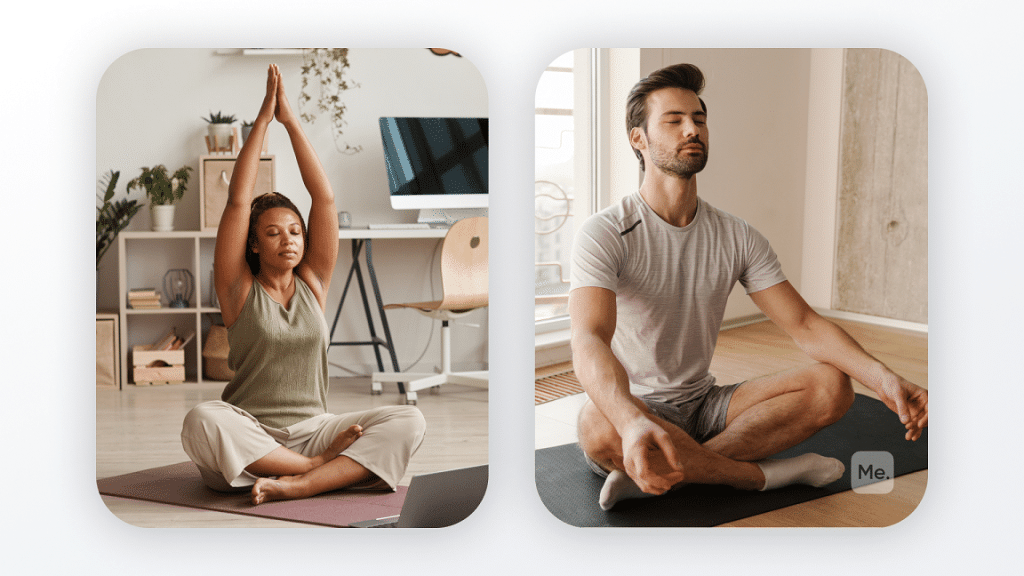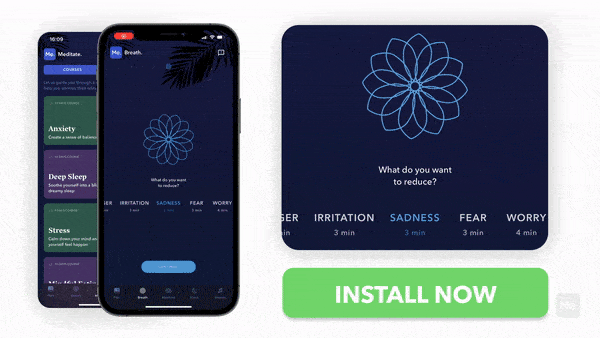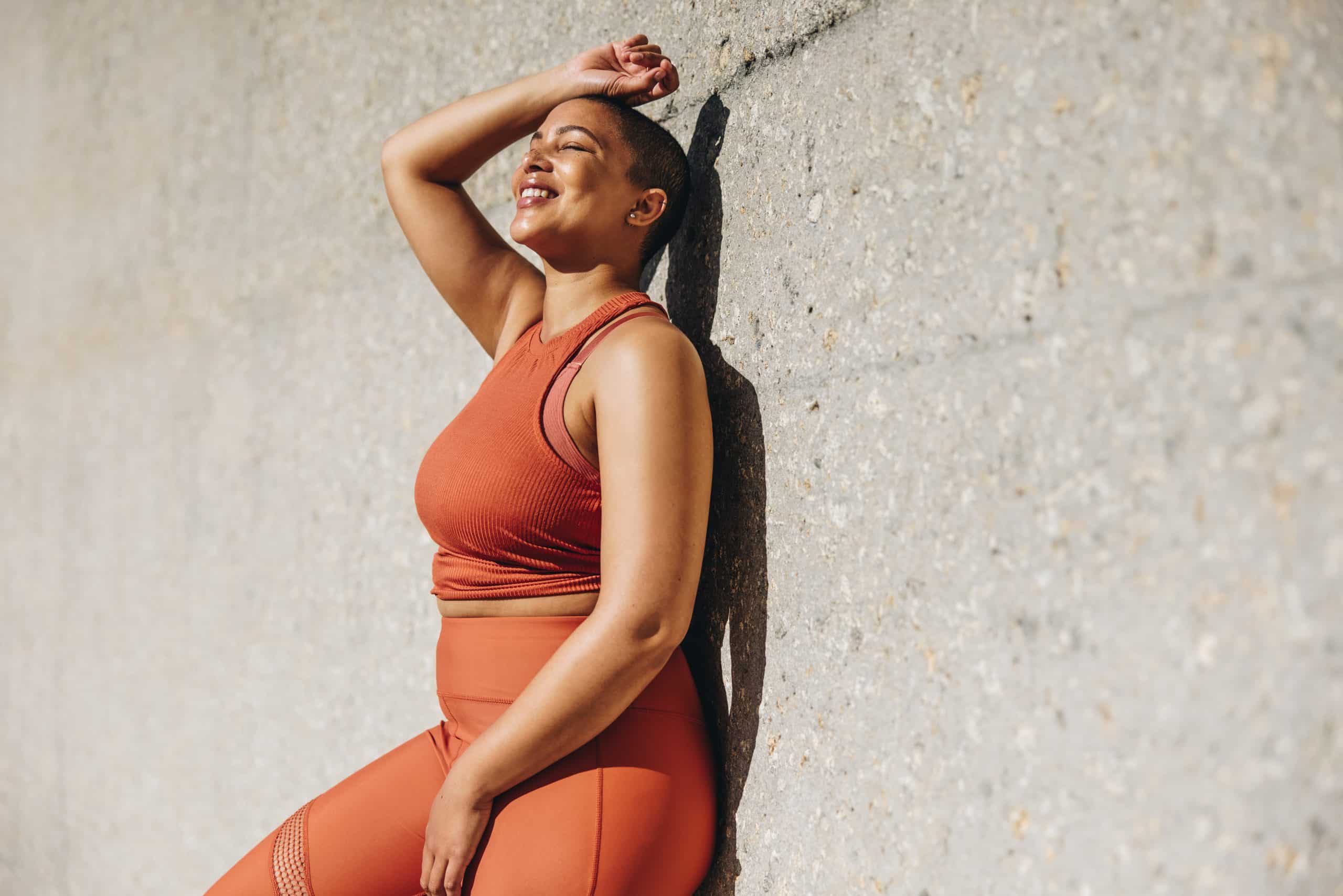Meditation For Beginners: How Hard Is It?
Looking for a way to kick-start your yoga practice but have doubts about whether you can do it? Meditation can be hard for beginners but it is not that scary as it might seem. Knowing the meditation tips and techniques for beginners, you will be able to overcome all the challenges. Similarly, you will learn to enjoy your practice, thus benefiting both your body and mind. So, here is the lowdown on how to begin meditating the easiest way.
Why Is Meditation Worth Trying?
You must have heard a lot about meditation and its effects on the human mind. People tend to engage in meditative practices because they want to reach stillness in their bodies and mind. Yet, meditation can offer you even more benefits for both your mental and physical wellbeing. At first glance, it sounds incredible that meditation, which is a practice that primarily involves your mind, can make you stronger and healthier in general. Nevertheless, a plethora of studies has proven the benefits of meditation for your overall health, making it a wellness practice worth trying.
Benefits Of Meditation
-
It Helps You Deal With Stress And Anxiety
While meditating, you escape the reality and forget about your day-to-day worries and problems. Additionally, meditation prevents perfectionistic thoughts and rumination that can trigger stress (15, 24, 25, 27).
-
It Is A Natural Way To Improve Your Memory
Indeed, mindfulness increases the cortical thickness in the hippocampus, which is responsible for the memory (4, 22).
-
It Helps You Stay Concentrated
Meditation is good at helping you sustain your memory, which enables you to focus on doing something for a longer time. This is especially important for those who study or work, as better attention boosts their performance (22).
Read More: Meditation State: Find Out Ho To Induce Deep Meditation And What Does It Do To Your Mind
-
It Improves Your Cardiovascular Health
Regular meditation makes an invaluable contribution to your blood vessels and heart. In fact, mindfulness practices are said to reduce the heart rate and blood pressure in hypertensive people (6, 7, 15, 23).
-
It Works Great With Cancer Medications
Combined with cancer drugs, meditation can improve the physical wellbeing of people with cancer. Besides, mindfulness is recommended to those who are treating cancer to reduce their anxiety and stress levels (15).
-
It Boosts The Immune System For The Hiv-Positive
Meditation ceases the declination of CD4+T lymphocytes, thus helping the immune system (15).
-
In The Long Run, It Can Prevent Alzheimer’s Disease
Mindfulness improves the blood flow to the brain, stalling neurodegeneration, which is the main cause of Alzheimer’s disease (25).
-
It Makes You Sleep Better
For those who have a sleeping disorder, meditation might be of great help, as it can beat even chronic insomnia (5, 21).
Meditation Tips For Beginners
Start Wise
First and foremost, you should be genuinely willing to meditate and reap the benefits of your practice. If you are not dedicated to what you are doing, you are bound to fail. So, before you implement meditation into your daily routine, you should have a goal and the reason why you want to commence meditating. There are multiple privileges both professional and amateur meditators enjoy, and you need to pick those that apply to you. Indeed, some experts might say that meditation is not about the result, it is about the process.
However, meditation can be hard for some beginners, who have heard or read somewhere that it is a relaxing and peaceful practice, and that it is non-demanding. As a result, these people might start thinking that everything they know about meditation is a lie and, subsequently, cease doing it, thinking that only chosen people can go in for mindfulness. Therefore, meditation is not what you start doing on the spot, and it can be learned (2). You need to prepare your mind for it and find the reason why you should stay consistent.
Here are a few tips on how to do it for beginners:
-
Choose the time for meditation
As a beginner, you might find it challenging to commit to meditating daily; this is what you need to learn to do. You should choose the perfect time for mindfulness and stick to it every day without skipping your meditation session. The time you choose depends solely on your personal preference. Yet, it is believed that morning meditation can give you the energy to do your routine tasks, whereas meditating at night can soothe you (2). You can experiment with time and see what feels best for you. Some people might want to meditate at a different time every day, depending on their mood and state.
-
Do Not Push Yourself
Meditation is not a sport, you do not have to do anything extraordinary. What you need is to listen to your body and do what feels good. It is not necessary to sit in Padmasana or the lotus position. This asana can be difficult for some people, and if they try to take it, they might be unable to focus on their breath and enjoy meditation. Hence, you can just take the sitting position on your mat or chair, whatever feels comfortable for you (1, 17).
-
Start With Short Meditation Sessions
When it comes to meditation, it is nonsense to find excuses not to do it. It is not necessary to meditate for hours, 5 minutes is enough, especially for beginners (2). As you get used to your short meditation sessions and get a taste of it, you are free to proceed to longer ones.
These are the key meditation recommendations for beginners to stay consistent, and if you manage to follow them, you will no longer be a beginner. Consistency is the cornerstone of any human activity, and meditation is one of them. Remember, only through practicing mindfulness regularly, you will feel the benefits it has for your wellbeing.
Meditation Challenges For Beginners
Although meditation is not a physical activity, it can still be challenging for beginners. The hurdles newbies usually face are of emotional nature, as they can experience extreme emotions on the spectrum, from fear to playfulness. Likewise, some people may find it tiresome to hold the same position for lengthy periods. Other obstacles include:
-
Finding The Right Time For Your Practice
It is strongly recommended to meditate regularly and not to skip your sessions, although missing a couple of days is acceptable. Some might find it difficult to find even 5 minutes for meditation because they feel too tired or have a very busy day (18).
How to deal with it? Just think how ridiculous it sounds that you cannot spend even 5 minutes meditating. Apparently, you have time to check your social network profiles and message someone. You might also find yourself daydreaming for too long, which is the natural way for your brain to rest. With that being said, there is no reason why you cannot allocate a few minutes for your mindfulness practice. Human beings are not able to work all day long, their bodies and minds need rest. Even if you force yourself to work beyond limits, your body will refuse to do it. It will find a way to have a rest, or you can do this on your own, by choosing to meditate in particular. Indeed, mindfulness is a very useful practice that not only helps you relax but also relieves your stress and pain.
Read More: Meditation Thoughts: Bring Your Mind To A Point Of Stillness And Clarity
-
Distractive Sounds
As beginners sit down to meditate and close their eyes, their hearing sharpens and start noticing even the quietest sounds. Due to such sensitivity, it might be difficult to concentrate on the present moment and your breathing (18).
How to deal with it? It is near to impossible to find a completely silent place, where you could not be distracted. Even in a forest, you can hear birds singing and leaves rustling. Hence, there is no point running from the sounds you cannot escape. Complete silence is not the precondition for meditation, as many think it is. Your task here is to stay present and enjoy the environment you are in. Therefore, you should accept each sound you hear instead of resisting it because this is part of where you are. If your struggle with the sounds is too overwhelming, you can use earplugs or noise-canceling earphones to avoid the discomfort the distraction causes (18).
-
The Temptation To Fall Asleep
Meditation helps you unwind and temporarily forget about your problems to the extent of dozing off. When you close your eyes and do nothing, your body automatically starts preparing you to sleep.
How to deal with it? Although you are free to choose the position for meditation, it is recommended that you do it while sitting. Lying down will only make things worse as it is the position you usually sleep in. If it is extremely hard for you to stay awake during meditation, you should schedule your sessions for the morning. In this part of the day, after a good sleep, you are less likely to nod off (18).
BetterMe: Meditation & Sleep app can help you transmute stress into serenity, pull you up from the doldrums, free your mind from the cares and worries of the world, quell racing thoughts and infuse you with tranquility! Start using it now and change your life!
Meditation Techniques For Beginners
-
4-7-8 Breathing
It is a simple breathing technique that can help you reach a meditative state. The 4-7-8 method helps you improve your sleeping, being a natural tranquilizer that can substitute sleeping pills. Furthermore, unlike the latter, this breathing technique has a long-lasting effect and can help you overcome insomnia (3). Also, the 4-7-8 method is said to relieve stress and anxiety (26).
How To Breathe With This Technique?
- Sit upright in a comfortable position.
- Touch behind your upper teeth with the tip of your tongue.
- Take a deep breath in for a count of 4.
- Hold your breath for a count of 7.
- Slightly open your mouth, keeping your tongue in the same position, and as you are exhaling, count to 8.
- Repeat this for at least 4 times (26).
-
Body Scan
The body scan is a perfect meditation option for those who experience tightness in their muscle and physical distress in general. Nevertheless, one should not underestimate its auspicious contribution to mental wellbeing. The body scan meditation technique has a strong stress-relieving effect and assists in combating insomnia. Additionally, it helps you find a balance between your mind and body, making them function in synergy (8).
How To Do A Body Scan?
- Take a sitting position.
- As you inhale, focus on your head and neck. Think about how you are feeling in that area, and on your exhale let go of any tension you may have there. Dedicate about 30 seconds to these parts of your body.
- Proceed to your shoulders, then arms, hands, chest, and so on, moving down along your body.
- If after the practice you still experience tightness in a particular part of your body, return to it (8).
-
Guided Imagery
Guided imagery is a visionary meditation technique that connects your senses to your imagination. This method is based on the theory that sight, hearing, smell, touch, and taste trigger certain thoughts and images in your mind. Guided imagery is also known for its curative effects, helping relieve the symptoms of different diseases. For instance, this meditation method, in combination with medications, can ease the pain in patients diagnosed with rheumatic diseases and cancers. At the same time, guided imagery can be used as a therapeutic method aimed at improving the psychosocial state of patients (10, 13, 14).
How To Do Guided Imagery?
- Take the sitting position and take a few breaths in to relax as you close your eyes.
- Start visualizing a peaceful setting where you would like to be at the moment. This could be a beach, forest, mountains, etc.
- Having the picture in your mind, start adding details to it. For instance, think about the air you are breathing in or imagine the sound of the splashing waves.
- Breathe slowly and deeply (12).
How To Stay Mindful For Beginners?
Meditation and mindfulness are considered synonymous, which is true to a certain extent. On the other hand, mindfulness and meditation cannot be used interchangeably because the former is rather a quality of meditation. Mindfulness encourages a person to live at the present moment and stay self-aware (20, 28). In other words, mindfulness is a meditation practice designed to prevent unwanted and repetitive thoughts and get rid of anxiety.
How To Stay Mindful?
Usually, people meditate in the sitting position with their eyes closed and focused on their breathing (20). Although this is the traditional way to meditate, it is not the only option. You can integrate meditation into your daily routines by:
-
Eating Mindfully
Taste your meals bit by bit so that you can verbalize what you are feeling. That is, you need to savor your food so much that you feel its taste, texture, and flavor. Mindful eating is useful for not only your mind but also your body, as it prevents overeating (11).
-
Working Out Mindfully
Exercising can be not only about lifting weights and pushing yourself to the limit. You should stay mindful during your workout session by focusing on every aspect of it. For example, pay attention to what muscles are working as you are performing a particular activity. Similarly, if you are working with weights, feel how heavy they are and how different areas of your body react to them. Mindful exercising makes you work out slowly, which is what beginners like, most of all. By working out slowly and meditating at the same time, you will build your muscles faster (11).
-
Bathing Mindfully
Instead of just relaxing in your bath and nearly falling asleep, stay present, and feel how the warm water feels for you. Enjoy every detail of the experience, inhaling and exhaling, and if it feels good, you can turn on some soft music (11).
-
Go For A Mindful Walk
The sitting position is certainly not the only way you can meditate: you can also do it while walking. As you are strolling, try paying attention to everything that surrounds you. It does not matter whether you are walking in a park or on a busy street. What matters here is your thoughts and senses. Indeed, your eyes perceive the surroundings, paying attention to the plants, cars, people, animals, and other objects or living beings, translating them into your meditative thoughts. Looking at those helps you stay present and avoid negative thoughts. If you do not feel like observing nature and people, you can still focus on your breathing, maybe by counting as you are inhaling and exhaling (11).
Chakra Meditation For Beginners
Chakra meditation is one of the most popular and favorite wellness practices, which is rather easy to learn. In general, this meditation type is designed to help you reach balance in your chakras, which are the energy reserves responsible for different areas of your body. There are 7 chakras located vertically along the midline of your body, from the forehead to the bottom of the spine (9). Apart from preserving energy in different areas of your body, chakras can help you control your behavior and life.
Truly, reaching balance in a particular chakra might help you resolve your problem in real life. Each chakra is responsible for not only a particular area of your body but also a sphere of your life. Chakra meditation might be challenging for beginners because it requires full-body awareness from you. However, with regular practice and dedication, you will eventually learn to gather your energy in one chakra.
The List Of Chakras
-
Root Chakra
Location: The base of your spine
Goal: Root chakra makes you feel grounded. So, if you do not feel connected to your family and home, or have financial insecurity, you should focus on balancing this chakra.
How to work it: Stand or walk barefoot, breathing deeply while taking each step.
-
Sacral Chakra
Location: Lower abdomen
Goal: Facilitate the interpersonal connection.
How to work it: Gather the positive energy in your palms, holding them in the prayer position. After taking 3 deep breaths in, lie down on your back and put the palms on your lower abdomen and stay in this position for 11 minutes.
-
Solar Plexus Chakra
Location: Upper abdomen
Goal: Boost self-confidence. Working this chakra will help you become less shy and more open-minded.
How to work it: Take a sitting position and start inhaling and exhaling slowly, noticing how you release your muscles and begin to feel relaxed.
-
Heart Chakra
Location: Above your heart
Goal: Balance your emotions. Likewise, the heart chakra serves as a bridge between the upper and lower parts of the body.
How to work it: Take the warrior 2, shoulder flossing, or full wheel position. As you finish your meditation practice, express your gratitude for everything you have and value.
-
Throat Chakra
Location: Your throat
Goal: Free you from restrictions and encourage you to be sincere.
How to work it: Use crystals, such as blue calcite, turquoise, and blue lace agate. During the meditation session, hold one of those in your left hand and place it near your throat.
-
Third-Eye Chakra
Location: Right between your eyebrows
Goal: Boost your intuition.
How to work it: Practice mindful meditation, connecting your mind to the present moment.
-
Crown Chakra
Location: Top of your head
Goal: Expand your consciousness
How to work it: Free your mind from all thoughts and worries and ensure you breathe smoothly throughout your meditation session.
Whether you want to learn how to exit the spiral of self-harming behavior, overcome anxiety, cure insomnia or simply give yourself the time and space to bliss out and soak up the moment of complete peace and quiet – BetterMe: Meditation & Sleep app is exactly the tool for that! If you don’t take care of number one, who will?
Yoga Meditation For Beginners
Although yoga is famous worldwide as a physical activity that improves your strength and flexibility, it is primarily a meditative practice. People go in for yoga to relax and release their muscles. Concurrently, yoga can help you build muscles, making your body stronger.
Yoga Advantages
- Anyone can practice yoga, regardless of their gender, age, occupation, and fitness level. It does not matter whether you are a beginner or advanced, you can still enjoy the results.
- Yoga meditation can reduce stress, allowing you to let go of your day-to-day problems and business and improve your nervous system (19, 29, 30).
- Yoga meditation can relieve your chronic pain (29).
- This wellness practice can help you find stillness in your body and mind.
- It can decrease your BMI (19). In other words, yoga and yoga meditation, in particular, can help you lose body weight. However, if you are planning to burn a lot of calories, yoga will not suffice.
Yoga meditation is not the easiest to start for beginners. It requires you to move and hold different postures throughout the practice.
Basic Yoga Meditation Poses For Beginners
-
Child’s Pose
It is good to start and end your practice with this pose as it helps you relax and stretch your body. Simultaneously, it is an easy pose that you can hold for a long time. To release into the pose, start standing on your fours and lower your bottom to your heels, extending your hands in front of you (28). In order to stay mindful when holding this position, focus on relaxing all your muscles on your exhale.
-
Downward-Facing Dog
This pose is aimed at strengthening your shoulders and arms and stretching your hamstrings and calves. It is a perfect position to relieve back pain and warm up the spine. In your all-fours position, start extending your legs, while keeping your palms and heels in the same place on the ground. To practice mindfulness in the downward-facing dog, concentrate on distributing weight evenly from your hips to shoulders (28).
-
Cobra Pose
This one usually follows the downward-facing dog, enabling you to stretch your spine. With this pose, you can also stretch your chest and abdomen. To do it, lie down on your belly and place your elbows under your shoulders. Then, start drawing your belly button up from the floor. To reach the meditative state in this position, try keeping your navel as far from the floor as possible and focus on breathing (28).
Pranayama, a complex of breathing exercises, is usually associated with yoga meditation. There are various pranayama techniques which follow different goals, ranging from helping you overcome fear, to bringing harmony to your mind. Apart from your mind and emotions, pranayama benefits your physical health, improving your lung functioning and relieving symptoms of numerous diseases (16).
Takeaways
Meditation is a comprehensive wellness practice that can train both your body and mind. It can benefit you regardless of your fitness level or lifestyle. If you are happy with your life, meditation will only boost your satisfaction. In case you are going through a difficult period in your life, mindfulness will help you overcome your depression.
If you are still doubting whether you should start meditating, here is the summary of the benefits you can get with it:
- Stress and anxiety relief
- Improved memory
- Better attention
- Good cardiovascular health
- Symptom reduction in patients with cancer
- Stronger immunity
- Alzheimer’s disease prevention
- Better sleep
Meditation is so non-demanding and, at the same time, beneficial that it is hard to withstand the temptation to try it. Although it can look hard for beginners, it is easy to learn. All you need is to set a goal before you start doing it and know why you want to meditate. If you are dedicated to this wellness practice, you will find it easy to overcome all the obstacles and difficulties that might come with it.
Conclusion
What you also need to do before starting to meditate is to learn the basic meditation techniques and types for beginners. These involve breathing exercises, body scan, guided imagery, mindfulness, chakra, and yoga meditation types. Breathing exercises make you feel relaxed and improve your lung functioning, body scan helps you bring awareness to your body. As for guided imagery, it cultivates positive energy in you, as you have an opportunity to transcend reality while being physically present; for example, at home, you can mentally travel to the place of your dreams.
Next, mindfulness will teach you to value the world you live in and enjoy being in your body. While practicing chakra meditation will allow you to focus on particular body areas, responsible for different facets of your life. Truly, if you struggle with some personal or life problems, you should learn what chakra is responsible for and then balance it. Finally, yoga meditation is the best option for those who want to find a balance between the body and the mind.
DISCLAIMER:
This article is intended for general informational purposes only and does not address individual circumstances. It is not a substitute for professional advice or help and should not be relied on to make decisions of any kind. A licensed physician should be consulted for diagnosis and treatment of any medical conditions. Any action you take upon the information presented in this article is strictly at your own risk and responsibility.
SOURCES:
- 12 Reasons To Meditate And 3 Steps To Get Started (2017, bodybuilding.com)
- 3 Tips to Start (and Stick With) a Meditation Practice (2020, livestrong.com)
- 4 Amazing Things You Had No Idea You Could Do With Your Breath (n.d., oprah.com)
- 7 Ways Meditation Can Actually Change The Brain (2015, forbes.com)
- A Mindfulness-Based Approach to the Treatment of Insomnia (2011, ncbi.nlm.nih.gov)
- A Randomized Controlled Trial on Effects of the Transcendental Meditation Program on Blood Pressure, Psychological Distress, and Coping in Young Adults (2009, pubmed.ncbi.nlm.nih.gov)
- Beyond Medications and Diet: Alternative Approaches to Lowering Blood Pressure (2013, ahajournals.org)
- Body scan meditation to reduce stress (n.d., headspace.com)
- Chakra Meditation: How to Balance Your 7 Chakras (2018, thriveglobal.com)
- Complementary Therapies for Symptom Management in Cancer Patients (2017, ncbi.nlm.nih.gov)
- Get Strong in 2019 Challenge Day 7: Benefits of Mindfulness (Even If You Hate Meditating) (2018, livestrong.com)
- Guided imagery (n.d., headspace.com)
- Guided Imagery as Supportive Therapy in Cancer Treatment (1999, reliasmedia.com)
- Guided Imagery for Arthritis and other Rheumatic Diseases: A Systematic Review of Randomized Controlled Trials (2016, ncbi.nlm.nih.gov)
- Health Benefits of Meditation: What the Newest Research Shows (2010, liebertpub.com)
- Health Impacts of Yoga and Pranayama: A State-of-the-Art Review (2012, ncbi.nlm.nih.gov)
- How to Meditate for Beginners – 30 Tips, Tricks and Tools (n.d., artofliving.org)
- Meditation for beginners (n.d., headspace.com)
- Meditation: A simple, fast way to reduce stress (2020, mayoclinic.org)
- Mindfulness exercises (2018, mayoclinic.org)
- Mindfulness meditation helps fight insomnia, improves sleep (2015, health.harvard.edu)
- Mindfulness meditation improves cognition: Evidence of brief mental training (2010, psych.uncc.edu)
- Review of Controlled Research on the Transcendental Meditation Program and Cardiovascular Disease. Risk Factors, Morbidity, and Mortality (2004, pubmed.ncbi.nlm.nih.gov)
- Stress Reduction in the Secondary Prevention of Cardiovascular Disease: Randomized, Controlled Trial of Transcendental Meditation and Health Education in Blacks (2012, pubmed.ncbi.nlm.nih.gov)
- Stress, Meditation, and Alzheimer’s Disease Prevention: Where The Evidence Stands (2015, ncbi.nlm.nih.gov)
- Stressed? Try the 4-7-8 Breathing Method to Find Your Zen (2020, livestrong.com)
- The Effect of Meditation on Self-Reported Measures of Stress, Anxiety, Depression, and Perfectionism in a College Population (2011, tandfonline.com)
- Yoga for Everyone (n.d., nytimes.com)
- Yoga, Meditation and Mind-Body Health: Increased BDNF, Cortisol Awakening Response, and Altered Inflammatory Marker Expression after a 3-Month Yoga and Meditation Retreat (2017, frontiersin.org)
- Yoga: Fight stress and find serenity (2019, mayoclinic.org)



